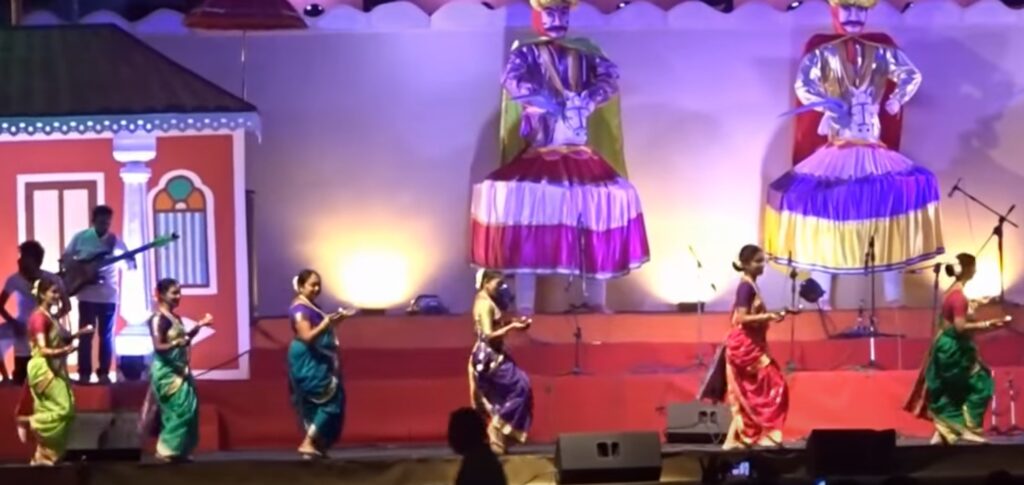Dekhni dance is one of the oldest dance forms of Goa. In Konkani it means beauty. This dance is a mixture of Indian and western music. Dekhni dance can be associated with those people who converted into Christianity from Hinduism during Portuguese rule. This dance form can be witnessed anywhere in Goa.

It is a dance combined with graceful movements and peaceful remedies. The dance starts with one lady starting the dance and others joining in as the dance continues.
Dekhni Dance Story
Hanv Saiba Poltodi Vetam is one of the most famous songs of Dekni dance. It was written by Carlos Eugenio Ferreira. This song was first published in 1895 in Paris and then in Goa in 1926. This song talks about a dancer who wanted to cross the river but the boatman refused to take her because the river was very rough that day.
On this, the woman offered him her gold earrings but the boatman still denied to accept her request. Then the dancer dances to please the boatman after which the boatman agrees to ferry her across. Rishi Kapoor’s song in Bobby, Na Mangu Sona Chandi is inspired by this song.
Dance Performance
Dekhni Dance is performed by a group of girls caring earthen oil lamps in their hands. Some gestures of Dekni have been taken by Bharatnatyam and Kathak. This is why it is also called a semi-classical folk dance.
These girls are represented as the servants of God in this dance form. It represents the life of a devadasi. Devadasis used to perform in temples and on happy occasions on request.
Music Instruments
Ghumat Drum is the main instrument used in this dance.
Other songs related to Dekhni dance.
- Aretanddela
- Vaingemkazarzatamhunn
- Tendulechimtendulim
- Xeutimmogrimabolim
- Voddekara
- Vhoirvhoirdongrar

Pingback: All Folk Dances of India - Auchitya